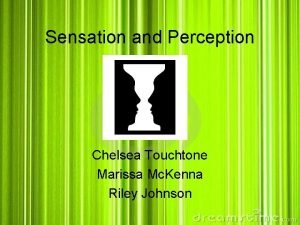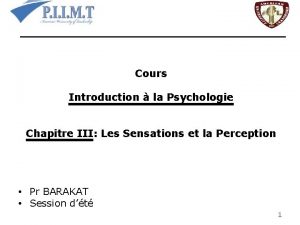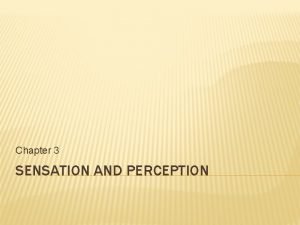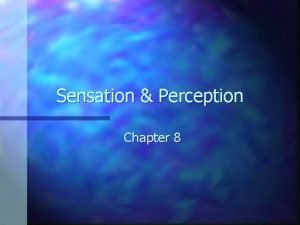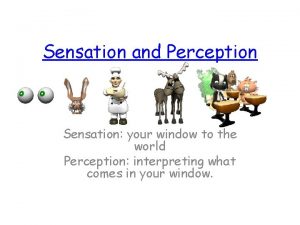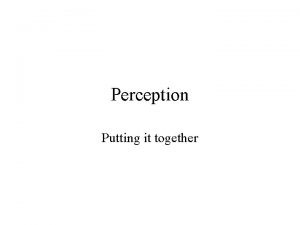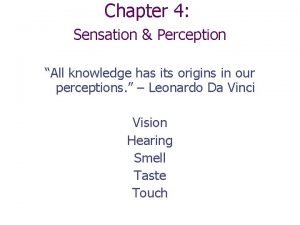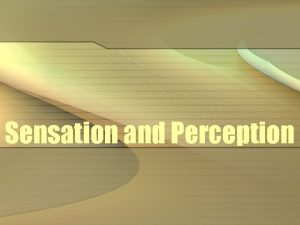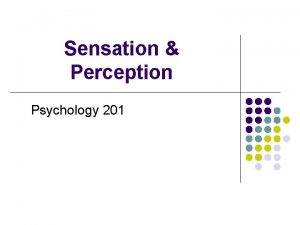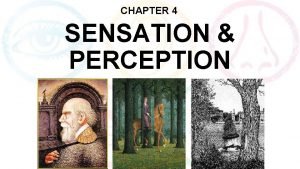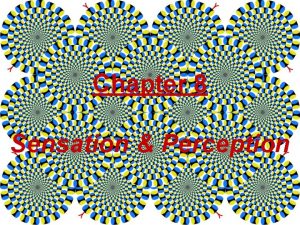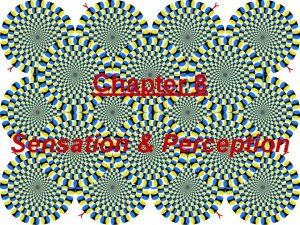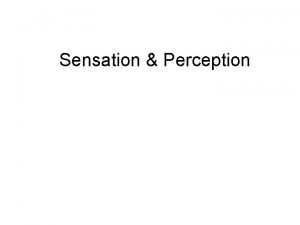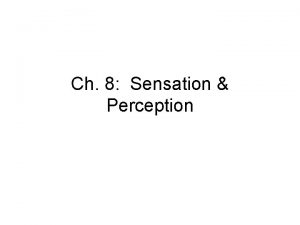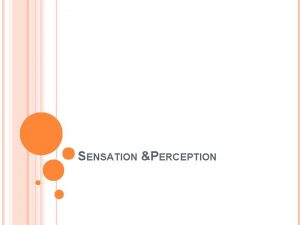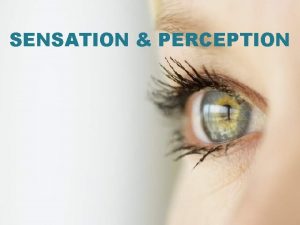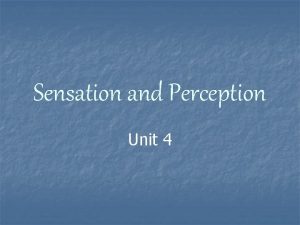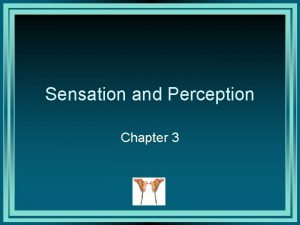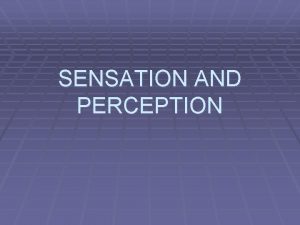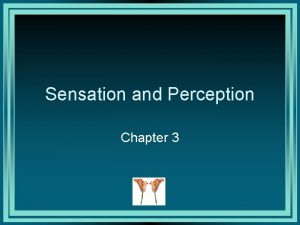Color perception Color is a sensation The rays



















- Slides: 19

Color perception • Color is a sensation („The rays are not coloured“) • Three types of cone photoreceptors transduce light into electrical signals • These signals are converted into opponent colors in the retinal ganglion cells • In the visual cortex, these excitation patterns are interpreted as colors

Trichromacy and Univariance Light Cones

Cone absorption spectra • L- and M-cone absorption spectra are highly similar • They evolved from a common ancestor about 35 Million years ago • L- and M-cone pigment genes are highly similar

Evolution and Color One idea about the evolution of color vision is that it helped us to detect ripe red fruit amongst green leaves. The trees growing that type of fruit evolved at around the same time. The monkeys eating the fruit helped distribute the seeds (together with some fertilizer). This process is called coevolution.

Störungen der Farbwahrnehmung

The world of the red-green blind

Cone absorption spectra L- and M-cone absorption spectra are highly similar

Color contrasts of natural objects There is a high correlation between L- and M-cone signals. This is not very efficient!

Opponent colors: Adaptation along one „cardinal direction“ leads to an increase of detection thresholds along that direction Detection thresholds along the other cardinal direction are not affected Adaptation along an intermediate direction leads to an overall increase in thresholds

Color opponent neurons in the LGN

Gegenfarbkanäle

Red-green opponency • An L-cone center leads to an excitatory response to a bright red field an inhibitory response to a dark green field • An M-cone surround leads to an inhibitory response to a bright green field an excitatory response to a dark red field • The cell is maximally modulated by alternations of large red and green fields • It responds well to dark and light stripes - +- -

Response to luminance • Response to small bright spot • Response to bright red spot • Response to bright green spot • No response to large white field

Response to color • No response to large white field • Response to bright red field • Inhibited by bright green field • No response to red center with green surround!

Color categories • The „cardinal directions“ of color space do not correspond to unique hues • Humans have the ability to group colors into a small number of categories (711) • Different subjects have different category borders • For each subject, the borders are quite sharp and consistent over time

Retinal processing

Three channels to the brain • Color opponent channels are functionally independent • They are based on different anatomical substrates, the M-, P-, and K-pathway • They can explain many different color phenomena, but not all of them • They form the chromatic inputs to visual cortex

Color in the cortex Cells in the LGN prefer the cardinal directions Cells in visual cortex exhibit preferences for intermediate directions of color space

Stages of color processing Cones Opponent colors Higher level mechanisms Categories
 Sensation and perception crossword review
Sensation and perception crossword review Sensation vs perception
Sensation vs perception Exposé sur la sensation en psychologie
Exposé sur la sensation en psychologie Chapter 3 sensation and perception
Chapter 3 sensation and perception Gestalt principles visual perception
Gestalt principles visual perception Perception vs sensation
Perception vs sensation Chapter 3 sensation and perception
Chapter 3 sensation and perception Chapter 8 sensation and perception
Chapter 8 sensation and perception Chapter 6 sensation and perception
Chapter 6 sensation and perception Relative height ap psychology
Relative height ap psychology Sensation and perception
Sensation and perception Perceptual system
Perceptual system Sensation and perception uu
Sensation and perception uu Psychology chapter 4 sensation and perception
Psychology chapter 4 sensation and perception Difference between sensation and perception
Difference between sensation and perception Five basic tastes
Five basic tastes Sensation and perception
Sensation and perception Sensation and perception
Sensation and perception Chapter 4 sensation and perception
Chapter 4 sensation and perception Chapter 5 sensation and perception
Chapter 5 sensation and perception
